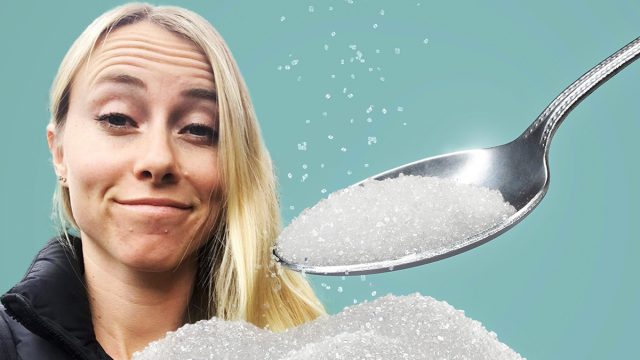10 Signs You're Eating Too Much Sugar
Ever find yourself reaching for snacks constantly, feeling tired after meals, or struggling with unexplained weight gain? These could be your body's ways of saying you're consuming too much sugar. With rising concerns about sugar's impact on health, understanding these signals has never been more critical.
Autumn Bates, a certified clinical nutritionist with a master's in nutrition and human performance, helps thousands achieve their wellness goals through science-backed nutrition advice. Here are her expert tips on identifying signs of excessive sugar consumption combined with recent research findings.
You're Hungry Every Hour or Two
"Higher intakes of sugar cause blood glucose levels to spike and then quickly drop back down," Autumn explains. This rapid drop triggers hunger shortly after eating. If you constantly need backup snacks in your bag, excessive sugar might be the culprit.
Acne and Breakouts Appear Frequently
Recent studies have linked hyperinsulinemia (high blood insulin levels) to acne breakouts, Autumn notes. This condition isn't just caused by obvious sugars – refined carbohydrates like chips, pretzels, and pasta break down into simple sugars, triggering insulin spikes that can lead to skin issues.
Belly Fat Won't Budge
"High sugar intakes can cause insulin levels to skyrocket and cause fat storing to happen, especially around the belly," Autumn warns. This occurs because insulin not only prevents fat-burning but actively promotes fat storage when levels remain elevated.
Afternoon Sugar Cravings Hit Hard
Those 3 PM sugar cravings aren't random, according to Autumn. They're typically caused by blood sugar crashes from earlier sugar consumption, leading to cravings for more sugary or starchy foods to boost energy levels.
Persistent Thirst Despite Hydration
Constant thirst, even when drinking plenty of water, could indicate insulin resistance or pre-diabetes, Autumn cautions. This occurs when uncontrolled blood glucose levels cause increased urination, triggering persistent thirst.
Dark Skin Around Body Creases
Known as acanthosis nigricans, dark patches around the neck or armpits are serious signs of pre-diabetes or insulin resistance. "If you have this, make sure to check in with your doctor," Autumn strongly advises.
Frequent Bloating After Meals
"Bloating is typically a result of trapped gas within the intestines," Autumn explains. Sugar is highly fermentable by gut bacteria, especially fructose, which makes up half of table sugar and most of honey. Those with conditions like SIBO may be particularly sensitive.
You Get "Hangry" Often
The hunger-anger combination isn't just a mood issue. As Autumn describes, "During that dip in blood sugar, you're also going to experience mood swings," which can affect your relationships and daily interactions.
Multiple Skin Tags Appear
The presence of several skin tags could indicate insulin resistance or pre-diabetes. Autumn emphasizes the importance of medical consultation if you notice this symptom.
Weight Loss Seems Impossible
"Sugar is the number one driver of our storing hormone insulin," Autumn states. "When insulin is high, that fat-burning state is simply turned off," making weight loss extremely difficult regardless of diet and exercise.
The Science Behind Sugar's Impact
Research published in JAMA Internal Medicine reveals alarming cardiovascular risks from excess sugar. People consuming 17-21% of their calories from added sugar face a 38% higher risk of dying from cardiovascular disease compared to those limiting sugar to 8% of their calories. The Centers for Disease Control and Prevention (CDC) warns that excess sugar consumption can lead to insulin resistance, potentially resulting in type 2 diabetes, nerve damage, vision loss, and clogged arteries.
Know Your Limits: Daily Sugar Guidelines
The American Heart Association (AHA) provides clear daily sugar intake limits:
- Women: Maximum 100 calories (6 teaspoons/24 grams) of added sugar.
- Men: Maximum 150 calories (9 teaspoons/36 grams) of added sugar.
The CDC recommends keeping added sugars below 10% of your total daily calories for optimal health.
RELATED: Woman Drops 20 Pounds With 3 "Lazy" Habits That Actually Stuck
Simple Swaps for Better Health
Make these evidence-based changes to reduce your sugar intake:
- Replace flavored yogurt with plain Greek yogurt and fresh fruit (saves 15-20g sugar).
- Choose unsweetened coffee instead of sweetened lattes (saves 8-17g sugar).
- Switch from sugary cereals to oatmeal (saves 15-25g sugar per serving).
And if you enjoyed this article, take advantage of these 15 Quick Ways to Lose Body Fat Percentage in a Week.





